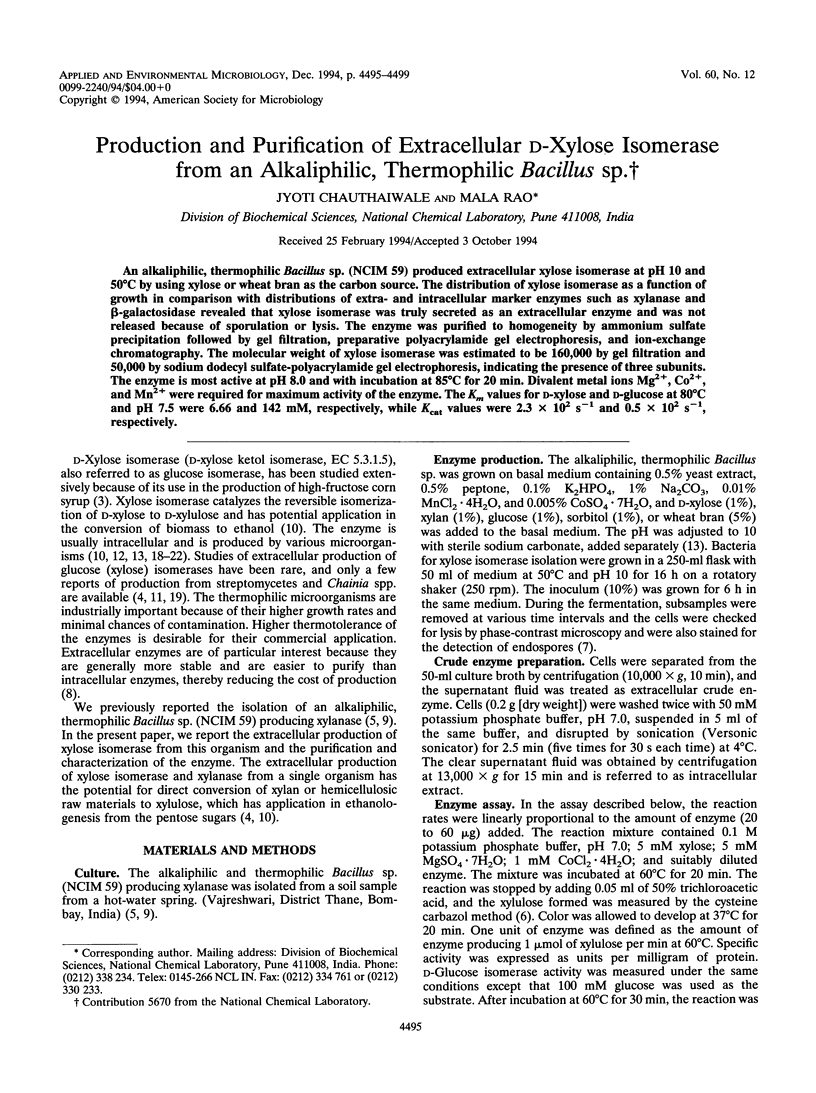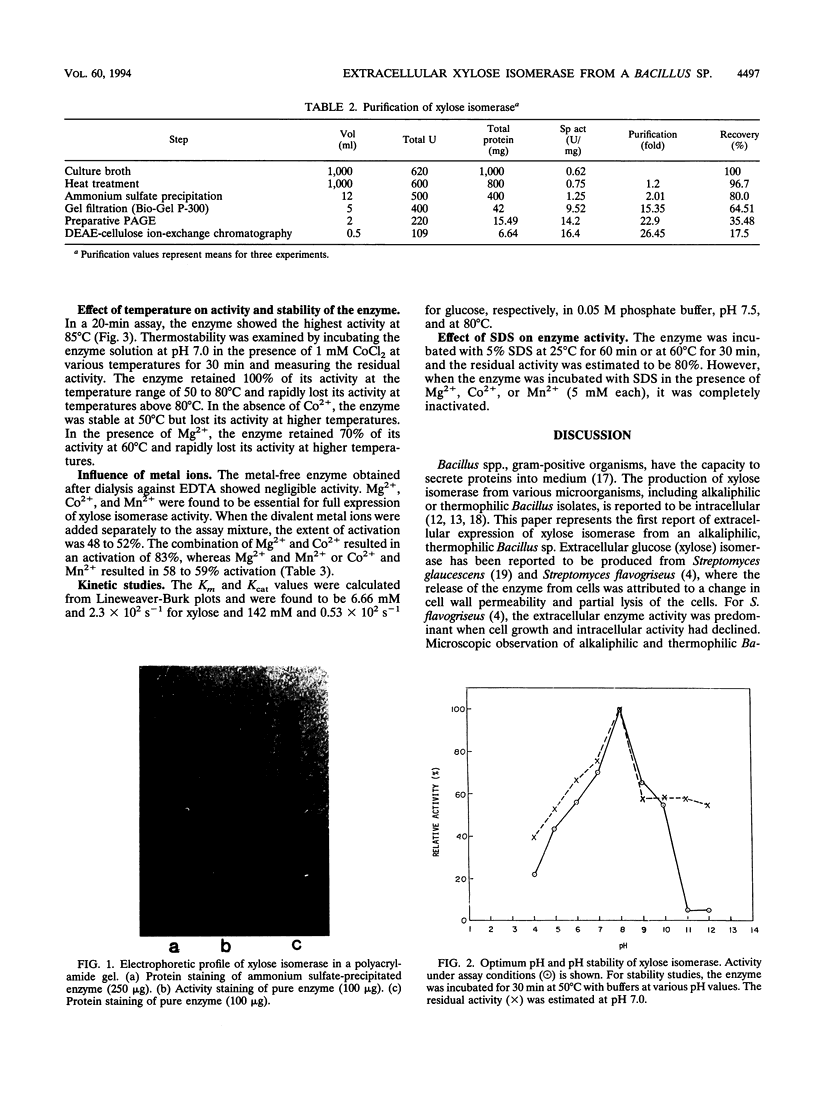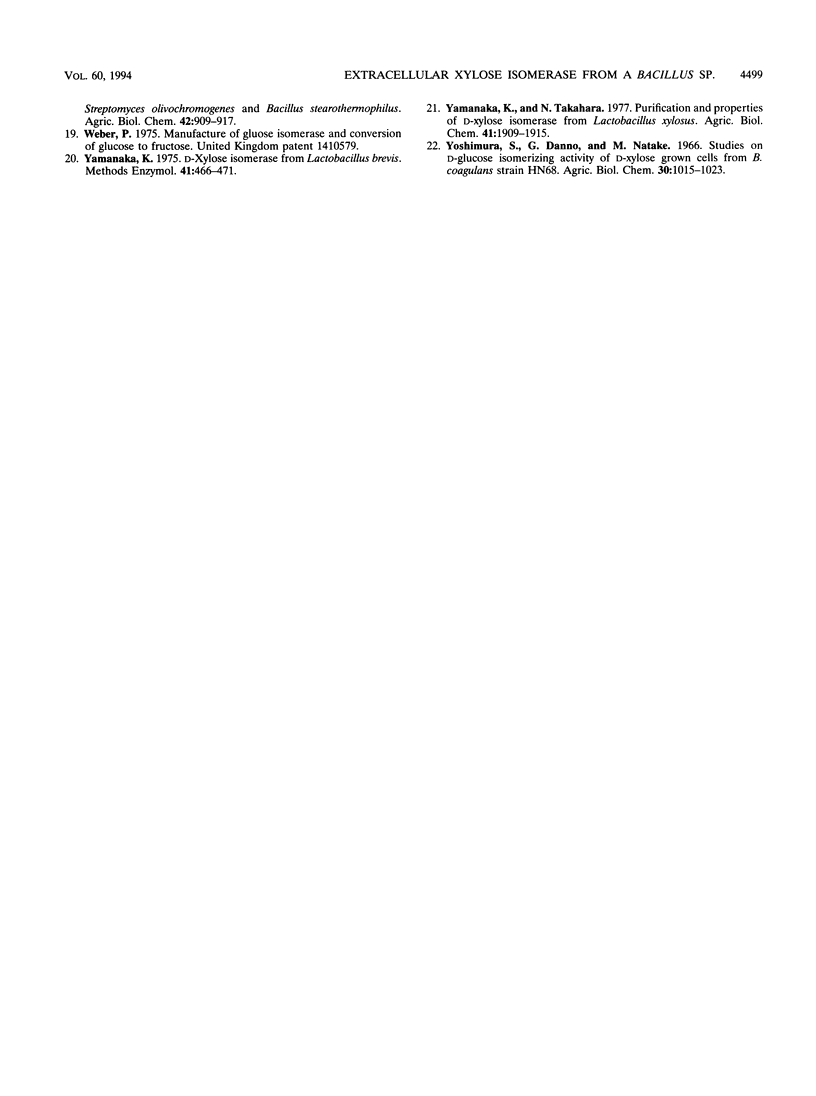Abstract
An alkaliphilic, thermophilic Bacillus sp. (NCIM 59) produced extracellular xylose isomerase at pH 10 and 50°C by using xylose or wheat bran as the carbon source. The distribution of xylose isomerase as a function of growth in comparison with distributions of extra- and intracellular marker enzymes such as xylanase and β-galactosidase revealed that xylose isomerase was truly secreted as an extracellular enzyme and was not released because of sporulation or lysis. The enzyme was purified to homogeneity by ammonium sulfate precipitation followed by gel filtration, preparative polyacrylamide gel electrophoresis, and ion-exchange chromatography. The molecular weight of xylose isomerase was estimated to be 160,000 by gel filtration and 50,000 by sodium dodecyl sulfate-polyacrylamide gel electrophoresis, indicating the presence of three subunits. The enzyme is most active at pH 8.0 and with incubation at 85°C for 20 min. Divalent metal ions Mg2+, Co2+, and Mn2+ were required for maximum activity of the enzyme. The Km values for D-xylose and D-glucose at 80°C and pH 7.5 were 6.66 and 142 mM, respectively, while Kcat values were 2.3 × 102 s-1 and 0.5 × 102 s-1, respectively.
Full text
PDF




Images in this article
Selected References
These references are in PubMed. This may not be the complete list of references from this article.
- Blakesley R. W., Boezi J. A. A new staining technique for proteins in polyacrylamide gels using coomassie brilliant blue G250. Anal Biochem. 1977 Oct;82(2):580–582. doi: 10.1016/0003-2697(77)90197-x. [DOI] [PubMed] [Google Scholar]
- Bradford M. M. A rapid and sensitive method for the quantitation of microgram quantities of protein utilizing the principle of protein-dye binding. Anal Biochem. 1976 May 7;72:248–254. doi: 10.1016/0003-2697(76)90527-3. [DOI] [PubMed] [Google Scholar]
- Chen W. P., Anderson A. W., Han Y. W. Production of Glucose Isomerase by Streptomyces flavogriseus. Appl Environ Microbiol. 1979 Feb;37(2):324–331. doi: 10.1128/aem.37.2.324-331.1979. [DOI] [PMC free article] [PubMed] [Google Scholar]
- DISCHE Z., BORENFREUND E. A new spectrophotometric method for the detection and determination of keto sugars and trioses. J Biol Chem. 1951 Oct;192(2):583–587. [PubMed] [Google Scholar]
- Eveleigh D. E., Montenecourt B. S. Increasing yields of extracellular enzymes. Adv Appl Microbiol. 1979;25:57–74. doi: 10.1016/s0065-2164(08)70146-1. [DOI] [PubMed] [Google Scholar]
- Laemmli U. K. Cleavage of structural proteins during the assembly of the head of bacteriophage T4. Nature. 1970 Aug 15;227(5259):680–685. doi: 10.1038/227680a0. [DOI] [PubMed] [Google Scholar]
- Mishra C., Keskar S., Rao M. Production and Properties of Extracellular Endoxylanase from Neurospora crassa. Appl Environ Microbiol. 1984 Jul;48(1):224–228. doi: 10.1128/aem.48.1.224-228.1984. [DOI] [PMC free article] [PubMed] [Google Scholar]
- Priest F. G. Extracellular enzyme synthesis in the genus Bacillus. Bacteriol Rev. 1977 Sep;41(3):711–753. doi: 10.1128/br.41.3.711-753.1977. [DOI] [PMC free article] [PubMed] [Google Scholar]



